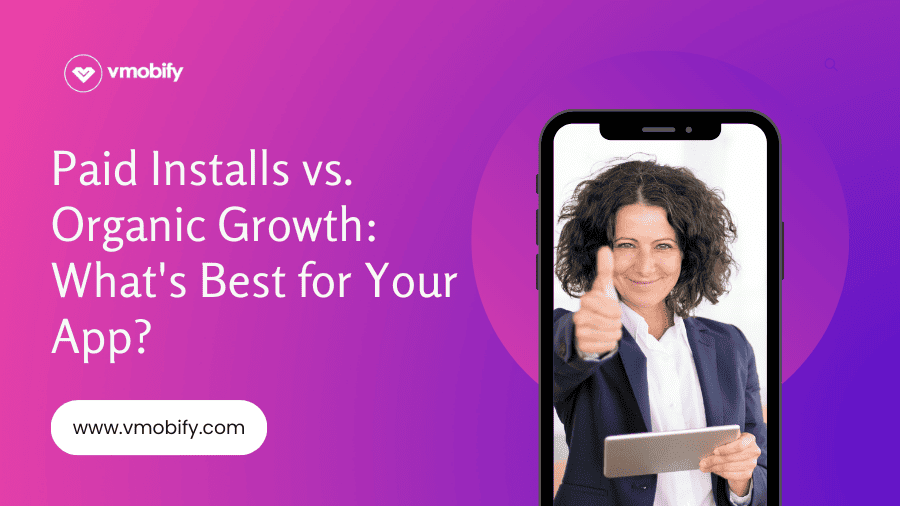In the fast-paced world of mobile app development and marketing, the battle for user acquisition and app downloads is fierce. App developers and marketers constantly face the critical decision of whether to invest in paid installs or rely on organic growth strategies to boost their app’s popularity. Each approach has its advantages and considerations, and choosing the right one depends on various factors unique to your app and your goals. In this comprehensive guide, we will delve into the dynamics of paid installs and organic growth, helping you determine the best strategy for your app’s success.
The Power of Paid Installs
Paid installs offer a rapid and straightforward way to acquire users. By running paid advertising campaigns across different platforms, you can instantly increase your app’s visibility and attract users who are actively looking for apps like yours. This method allows you to jumpstart your user base and potentially gain a competitive edge.
Targeted Marketing
Paid installs enable precise targeting of your audience. You can define demographics, interests, and behaviors to ensure that your app reaches the most relevant users. This level of specificity can lead to higher-quality users who are more likely to engage with your app and become long-term customers.
App Store Rankings
Paid installs can also impact your app’s ranking on app stores. Increased downloads can improve your app’s visibility in app store search results, making it more discoverable to users browsing for apps in your niche. Higher rankings can further boost organic growth.
Considerations for Paid Installs
While paid installs offer many benefits, they come with certain considerations:
Cost
Running paid advertising campaigns can be costly, especially if you’re competing in a highly competitive app category. It’s essential to set a budget and carefully monitor your spending to ensure a positive return on investment (ROI).
User Retention
Paid installs may not always result in high user retention rates. Some users may download your app out of curiosity or because of the ad but may not find long-term value in it. Retaining these users can be challenging.
Ad Fatigue
Users exposed to frequent ads for your app may experience ad fatigue, leading to a negative perception of your brand. Balancing ad exposure is crucial to avoid this issue.
The Magic of Organic Growth
Organic growth focuses on acquiring users naturally, without direct advertising. Users find your app through app store search, word-of-mouth, referrals, and positive reviews. This approach can lead to a sustainable user base that’s more likely to remain engaged over time.
Cost-Effective
Organic growth tends to be cost-effective compared to paid installs. While it may take longer to see significant results, the users acquired through organic methods often come at little to no direct cost.
High-Quality Users
Users who discover your app organically are more likely to be genuinely interested in your app’s offerings. They may have specific needs or interests that align with your app, leading to higher user retention and engagement rates.
Considerations for Organic Growth
While organic growth offers several advantages, it also presents challenges:
Time-Consuming
Building an organic user base takes time and patience. It may require substantial effort in app store optimization (ASO), content marketing, and community building.
Uncertainty
Organic growth strategies do not guarantee immediate results. You may need to experiment with different approaches to find what works best for your app.
Competitive Landscape
In highly competitive app categories, organic growth can be challenging as numerous apps are vying for users’ attention. Standing out requires a well-executed ASO strategy and compelling content.
Finding the Right Balance
In the world of mobile apps, it’s not a matter of choosing between paid installs or organic growth but finding the right balance between the two. Most successful app developers and marketers incorporate both strategies into their overall user acquisition plan.
1. Start with Paid Installs
Consider using paid installs initially to jumpstart your app’s user base, increase visibility, and gather user data. This can provide valuable insights into user behavior and preferences.
2. Invest in Organic Growth
Simultaneously, invest in organic growth strategies to build a sustainable user base. Focus on ASO, content marketing, social media engagement, and fostering a community around your app. Over time, organic growth can help reduce user acquisition costs.
3. Analyze and Adjust
Regularly analyze the performance of both paid installs and organic growth efforts. Adjust your strategies based on user acquisition costs, retention rates, and overall app success.
4. Seek Professional Guidance
Consider enlisting the services of experts like Vmobify who specialize in app marketing and user acquisition. They can help you develop a customized strategy that aligns with your app’s goals and budget.
Conclusion
The choice between paid installs and organic growth depends on various factors, including your app’s niche, budget, and goals. While paid installs offer quick user acquisition and targeted marketing, organic growth provides sustainability and cost-effectiveness. Striking the right balance between the two approaches is often the key to long-term success in the competitive world of mobile apps.
By analyzing your app’s specific needs and seeking professional guidance, you can chart a path to app success that’s tailored to your unique circumstances. Whether you opt for paid installs, organic growth, or a combination of both, the goal is to ensure your app thrives and becomes a valuable asset in the mobile app landscape.


Add a Comment